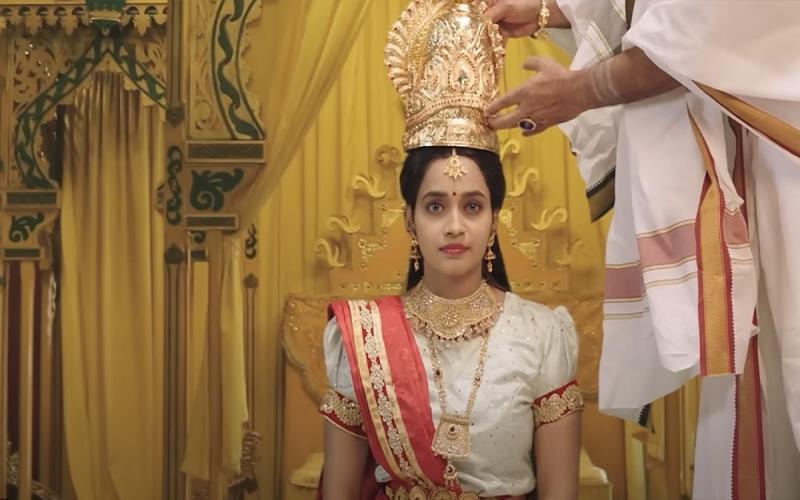Maya Puthagam Movie Review: An Enigmatic Tale of Illusions, Secrets, and Discovery
Introduction to Maya Puthagam
Maya Puthagam is a thought-provoking drama that blends elements of mystery, fantasy, and psychological intrigue, captivating audiences with its unique narrative. Directed with finesse, the film explores the themes of destiny, choice, and the impact of the past on the present. With compelling performances, an engaging storyline, and striking visuals, Maya Puthagam takes viewers on an emotional and intellectual journey, keeping them hooked with unexpected twists. The film’s ability to blend reality with fantasy offers a fresh perspective, making it a standout entry in contemporary cinema.
Plot and Storyline of Maya Puthagam
The story of Maya Puthagam revolves around Aravind, a young man who stumbles upon a mysterious book, “Maya Puthagam,” which seems to predict events in his life. Initially dismissing the book as a coincidence, Aravind becomes increasingly disturbed as the events unfold exactly as described. What begins as mere curiosity quickly spirals into a journey of self-discovery, forcing him to confront hidden aspects of his past.
As Aravind struggles to change his destiny, the narrative delves into the fine line between fate and free will. Along the way, he encounters people from his past and present who are somehow connected to the mysterious book, adding layers to the plot. The story builds toward an emotional climax, where Aravind must make a crucial decision—whether to follow the book’s prophecy or defy it, risking everything in the process.
The narrative seamlessly weaves between flashbacks and present-day events, creating a sense of intrigue and suspense. With every twist, the audience is drawn deeper into the story, questioning what is real and what is imagined, making Maya Puthagam a compelling and unforgettable experience.
Performances and Character Development
The performances in Maya Puthagam are exceptional, with the lead actor portraying Aravind’s emotional journey with depth and authenticity. His portrayal of a man grappling with existential questions and personal dilemmas adds weight to the narrative, making his character relatable and engaging. The subtle shifts in his performance—from curiosity to fear, and ultimately, to resolve—make Aravind’s transformation feel organic and convincing.
The supporting cast delivers strong performances, adding complexity to the story. Aravind’s love interest plays a pivotal role, providing both emotional support and conflict, which propels his journey forward. Their relationship reflects the tension between personal desires and the demands of fate, adding emotional depth to the narrative.
Other characters, including Aravind’s childhood friend and an enigmatic stranger connected to the book, contribute meaningfully to the story. Their interactions with the protagonist highlight the theme of interconnectedness, emphasizing that our past choices shape our present and future. Each character adds to the mystery and intrigue, enriching the narrative and keeping the audience engaged.
Direction and Screenplay
The direction of Maya Puthagam is masterful, with the filmmaker skillfully balancing mystery, fantasy, and emotional drama. The narrative flows seamlessly, keeping the audience invested in the protagonist’s journey while gradually unraveling the mysteries surrounding the book. The director’s attention to detail is evident in every scene, from the visual symbolism to the carefully crafted dialogues.
The screenplay is engaging and thought-provoking, with dialogues that reflect the philosophical undertones of the film. Every conversation adds layers to the narrative, revealing the characters’ motivations and inner conflicts. The pacing of the film is well-balanced, ensuring that the tension builds steadily without losing the emotional impact of the quieter moments.
The narrative avoids clichés, offering a fresh take on the concept of destiny versus free will. The director uses visual metaphors and symbolic elements effectively, adding depth to the storytelling and encouraging viewers to interpret the narrative on multiple levels.
Cinematography and Visual Appeal
The cinematography of Maya Puthagam enhances the film’s surreal and introspective tone. The visuals are striking, with dreamlike sequences and carefully framed shots that reflect the protagonist’s inner turmoil. The use of contrasting colors and lighting adds to the narrative’s emotional depth, symbolizing the conflict between light and shadow, clarity and confusion.
The film’s visual aesthetic complements its narrative, immersing the audience in a world where reality and fantasy coexist. Close-up shots capture the characters’ emotions, making their struggles feel personal and immediate. The cinematography plays a significant role in building suspense, using shadows and reflections to suggest that not everything is as it seems.
Music and Background Score
The background score of Maya Puthagam is integral to the film’s emotional and narrative impact. The music reflects the shifting moods of the story, from moments of quiet introspection to scenes filled with tension and urgency. The soundtrack features a blend of haunting melodies and energetic beats, enhancing the storytelling without overpowering it.
The placement of songs within the narrative is thoughtful, adding emotional weight to key moments. The background score transitions seamlessly between scenes, ensuring that the flow of the narrative remains smooth and engaging. The sound design, with its use of silence and subtle audio cues, heightens the suspense and draws the audience deeper into the story.
Themes and Emotional Resonance
At its core, Maya Puthagam explores themes of fate, free will, and personal responsibility. The narrative emphasizes that while destiny may shape the circumstances of our lives, it is our choices that define who we are. The film encourages viewers to reflect on their own lives, questioning how much control they truly have over their futures.
The story also delves into the impact of past experiences on the present, highlighting the interconnectedness of people and events. Through Aravind’s journey, the film suggests that understanding and accepting one’s past is essential for personal growth and self-discovery. Maya Puthagam resonates with audiences by portraying universal themes of love, loss, and redemption in a unique and thought-provoking way.
Audience Reception and Box Office Performance
Maya Puthagam has received widespread acclaim for its engaging narrative, thought-provoking themes, and strong performances. Critics have praised the film for its originality and the director’s ability to blend multiple genres seamlessly. Viewers have appreciated the film’s philosophical undertones, calling it both entertaining and reflective.
At the box office, Maya Puthagam has performed well, drawing in audiences with its intriguing premise and emotional depth. Word-of-mouth recommendations have contributed to the film’s success, with many viewers applauding its fresh take on the themes of destiny and free will. The film’s ability to spark discussions about life’s uncertainties has further boosted its popularity.
Conclusion
In conclusion, Maya Puthagam is a captivating and thought-provoking film that offers a unique blend of mystery, fantasy, and emotional drama. With its compelling narrative, powerful performances, and stunning visuals, the film leaves a lasting impact on its audience. Maya Puthagam encourages viewers to reflect on their own lives, questioning the role of destiny and the power of personal choice.
If you are looking for a film that offers both entertainment and intellectual depth, Maya Puthagam is a must-watch. Its exploration of fate, free will, and the interconnectedness of life ensures that it will remain a favorite among moviegoers for years to come.


